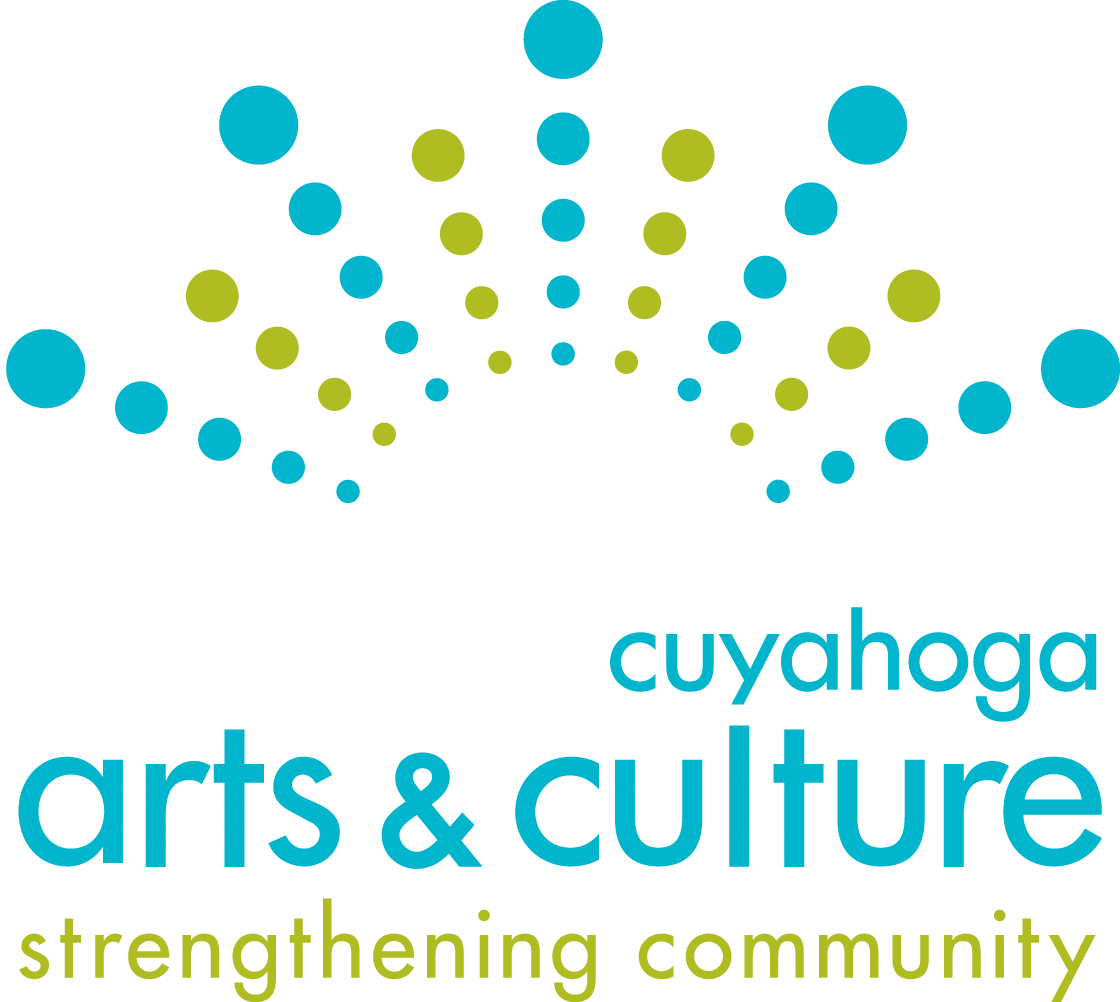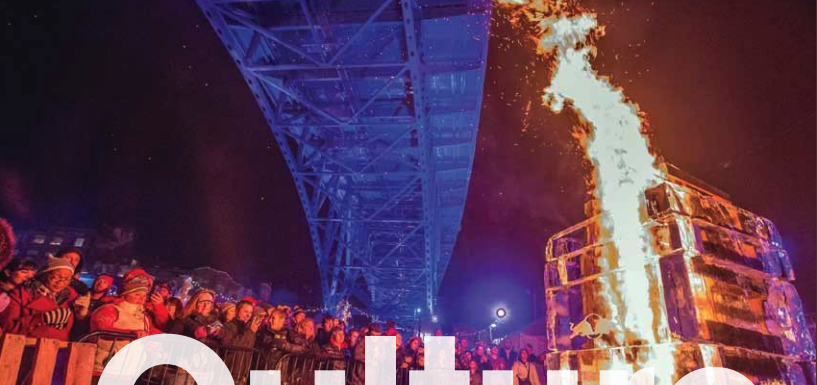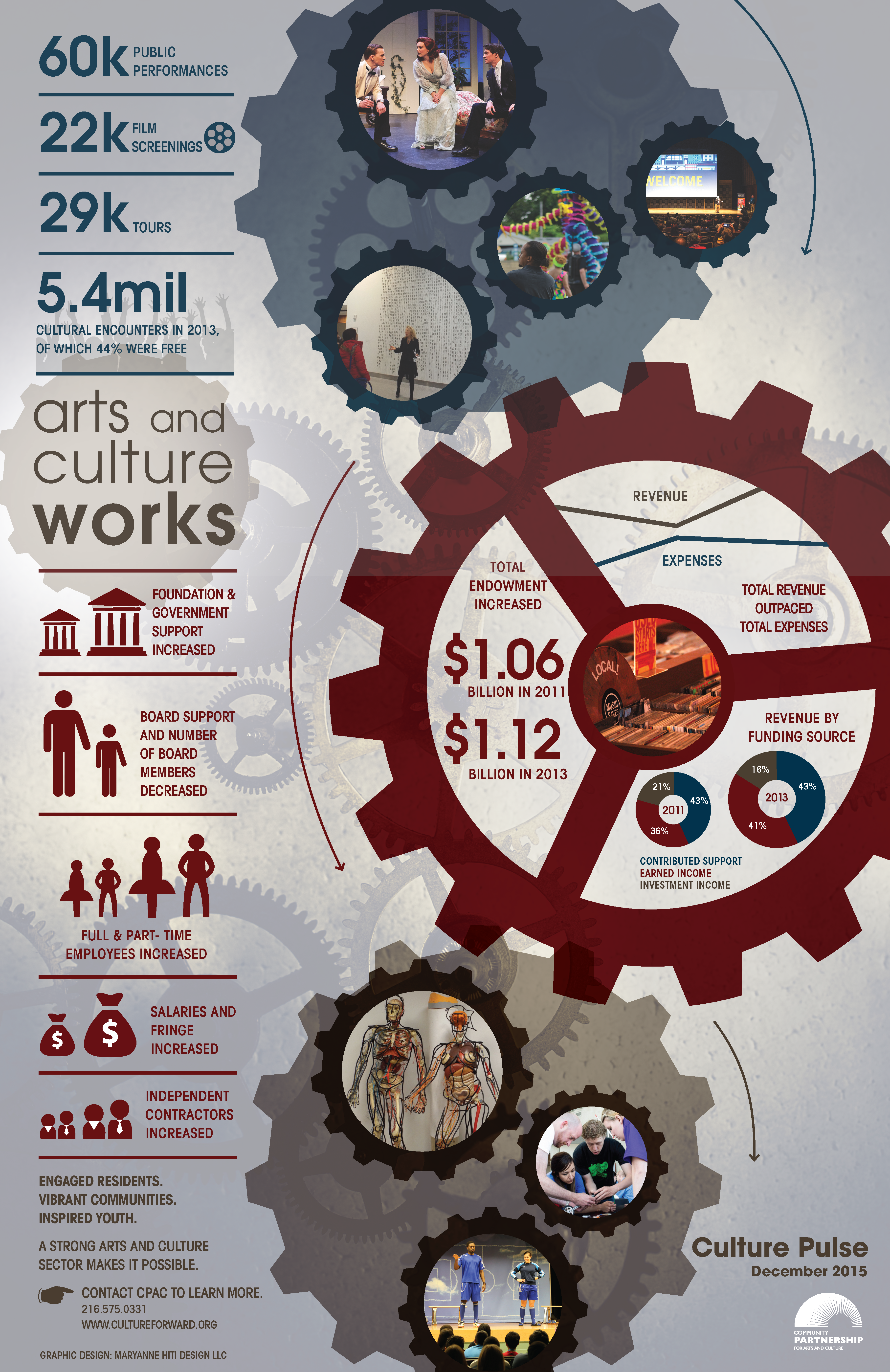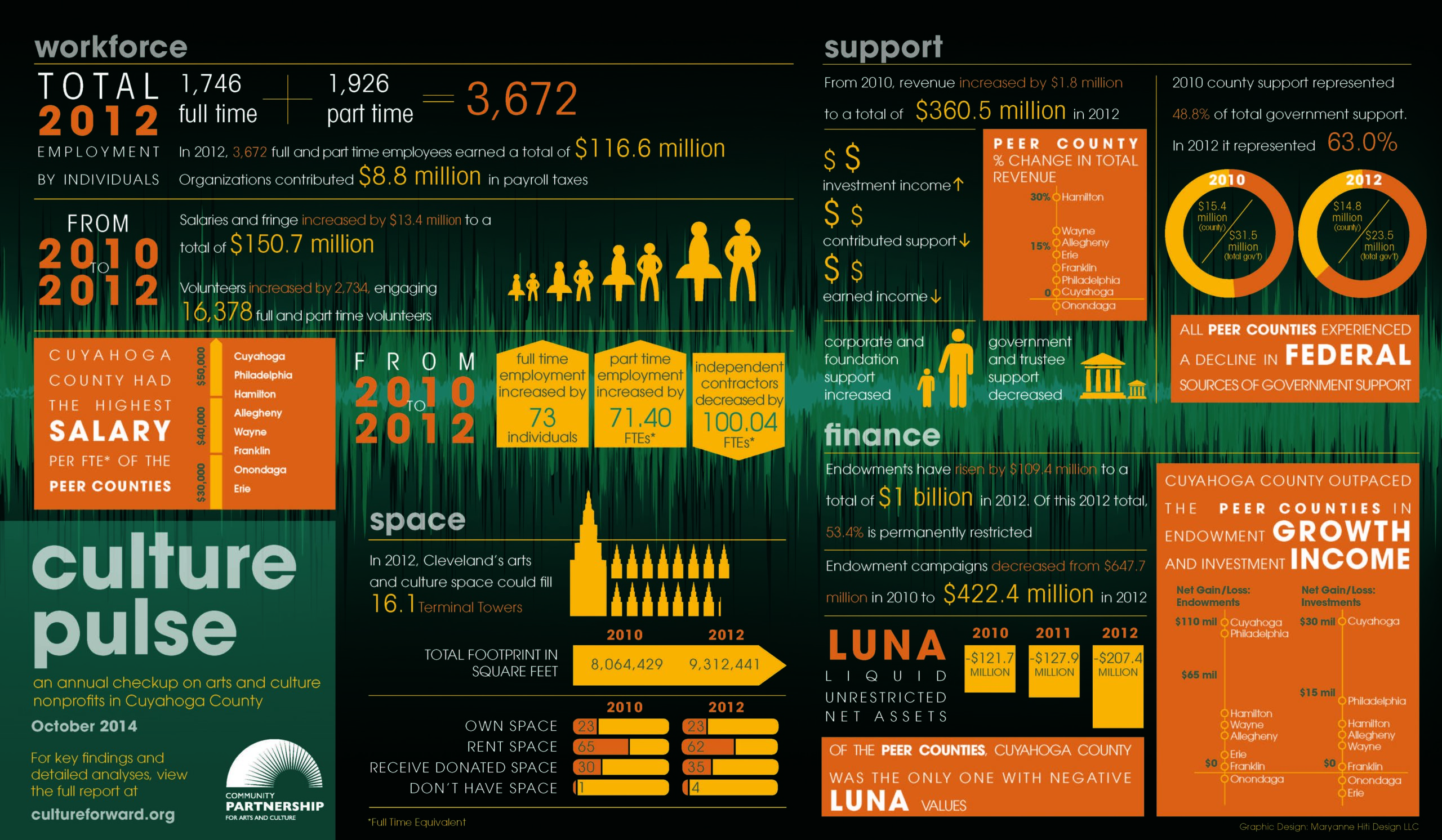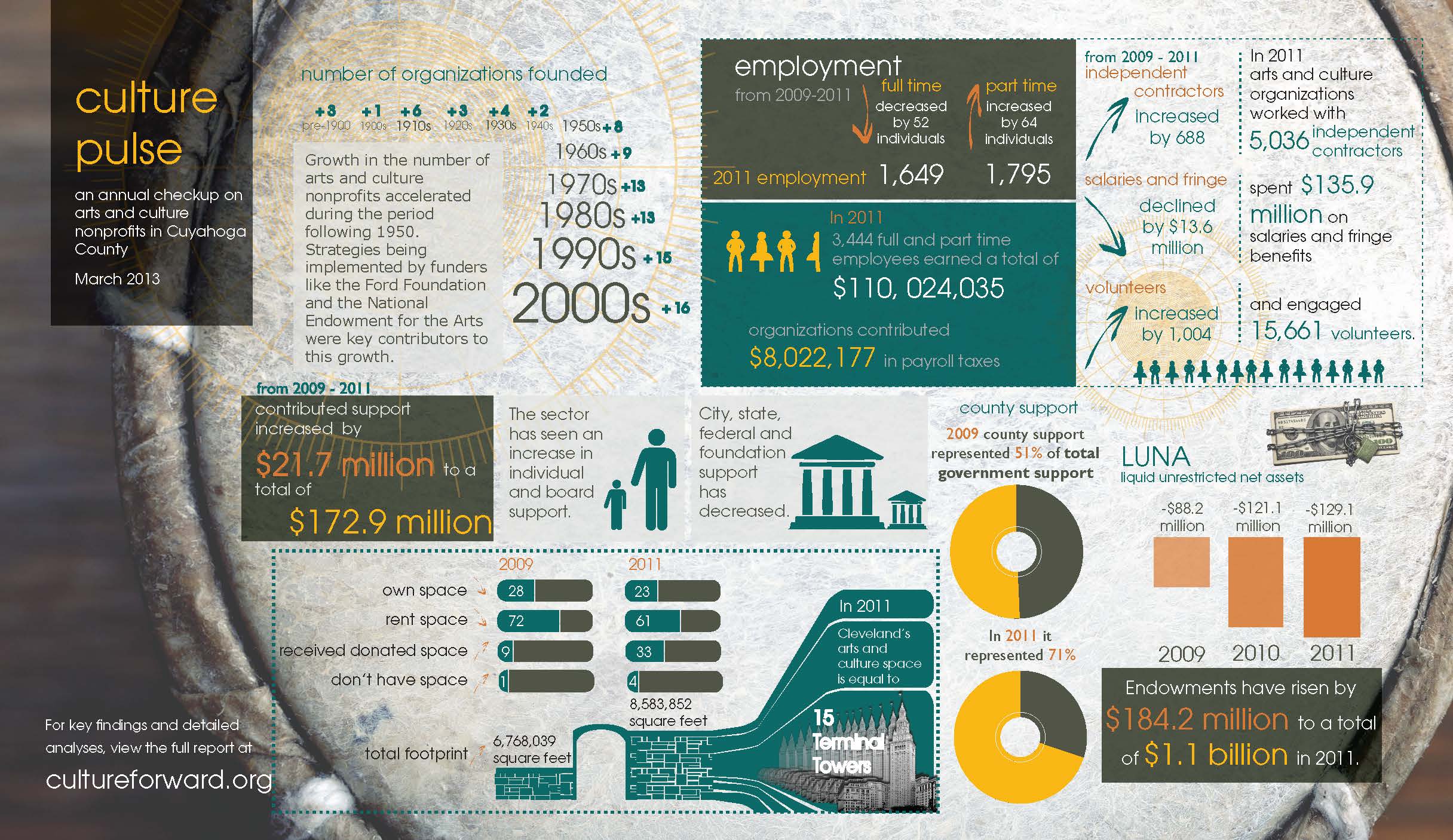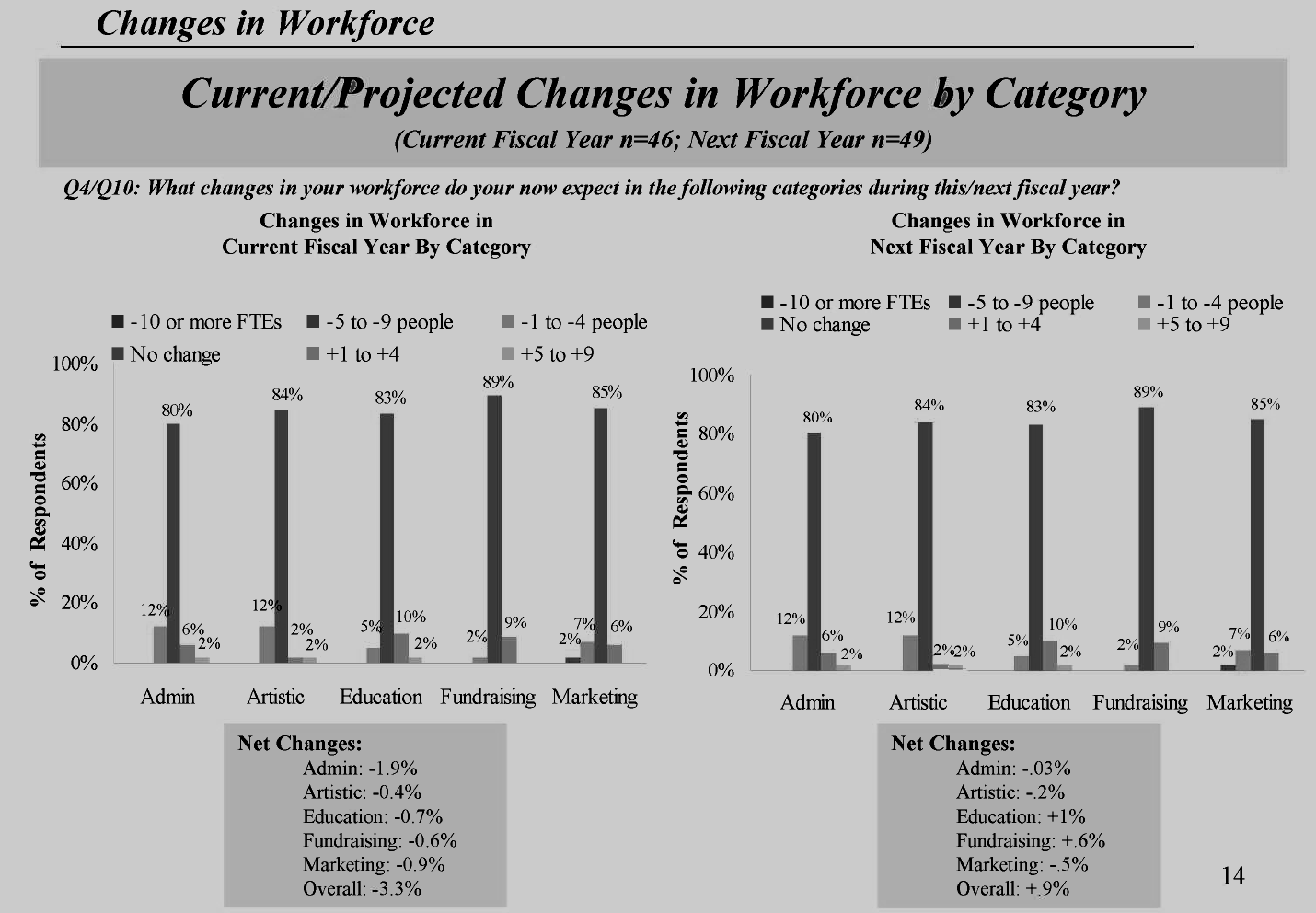Support for Artists Campaign Findings
Outcomes of the Support Artists Campaign
Assembly is excited to receive a $500,000 grant from Cuyahoga Arts & Culture to administer support for artists programs in 2024. This is a 25% increase in CAC funding over last year.
Chosen as the sole grantee for CAC’s Support for Artists funds, Assembly will run an artist support grant program in 2024 in addition to regranting funds to Cleveland Public Theatre, Julia de Burgos, Karamu House and SPACES to continue their successful work with artists who have been previously funded by grants from CAC. Assembly will work to ensure artists of multiple disciplines are represented, including musicians.
More information will be shared in the first quarter of 2024.
Assembly will structure the 2024 programs in response to feedback from Greater Cleveland’s artist community through four listening sessions and online surveys conducted August to September, 2023. Assembly engaged Dr. Brea Heidelberg of ISO Arts Consulting to facilitate these discussions to generate community feedback and recommendations to inform future programs and services. The research was funded by Cuyahoga Arts & Culture and The George Gund Foundation.
The key learnings from the listening sessions and survey that will guide our work in 2024 and beyond are:
- Prioritize unrestricted funds and increase and the amount awarded to each artist
- Increase overall support for artist funding by seeking sources beyond Cuyahoga Arts & Culture
- Create a central virtual space for finding grant opportunities, deadlines, and resources to help artists navigate and utilize the funding ecosystem
- Simplify and streamline grant application processes to reduce administrative burdens.
- Prioritize funding and resources for historically underrepresented or marginalized artists
- Increase opportunities for artists to be included in discussions on conversations about civic and social issues by facilitating connections between artists and civic leaders.
- Facilitate more artist listening sessions
- Establish an Artist Advisory Board that:
-
- Has diverse geographic representation from the City of Cleveland and Cuyahoga County
- Is comprised of artists representing a wide variety of arts disciplines
- Has term limits that allow for a regular rotation of artist advisors
- Is compensated for their time and expertise
- Advises Assembly for the Arts on their programs and policies
Working Together as One Community
Assembly and CAC acknowledge restorative work in the artist community will be foundational to the success of our future efforts. We look forward to working together and with all of you in the arts community to heal harms of the past, expand the pie of resources to our vitally important creative sector, and create a robust artist funding mechanism that includes sustained funding from private and public resources.
Past Programs
Assembly recognizes that the healthiest mix of artist support comes from a variety of sources. Previous artist support programs through Assembly have included:
- ARPA Rescue Funds $1.65 million to artists and creative for-profit businesses through American Rescue Plan Act funds from Cuyahoga County.
- Arts Leadership Residency in partnership with Cleveland Leadership Center and Huntington’s Entrepreneur in Residence program. 25 artists received $1,000 each and 6 learning sessions to help them grow their creative businesses.
- 2023 Creative Impact Fund 16 artists, collectives and informal groups received $6,250 each for flexible (unrestricted) funding and project-based placemaking in redlined communities that lack arts investment. Funded by a grant from Cuyahoga Arts & Culture.
Other Resources for Artists
Visit our Business of Art section for tools to help you make your creative endeavors a sustainable venture.
Looking for a Fiscal Sponsor? Skip the process of becoming a nonprofit organization in order to access grant funds by having Assembly become your fiscal sponsor. Not all community projects or artists can afford to or need to become their own nonprofit. The process of becoming a nonprofit requires time and resources that could otherwise devoted to the project itself. Assembly can help by acting as your fiscal sponsor
Sign up for Assembly’s newsletter to stay informed of upcoming workshops, community meetings and funding opportunities.
Check out and use clevelandartsevents.com. So much more than just events, this is a central website to create and find artist profiles, events, venues, and opportunities (jobs, grants, fellowships, artist calls). Create a free account today to join the monthly email list.
Still have questions? Email us at info@assemblycle.org.
This effort is made possible by generous support from the George Gund Foundation and Cuyahoga Arts & Culture.
REVS Cleveland / Akron
Reopen Every Venue Safely – Cleveland Akron
Guidelines and best practices for live music venues in Cleveland/Akron as part of the national Reopen Every Venue Safely (REVS) campaign.
With COVID-19 came the shutdown of many businesses. While most places reopened late spring/early summer, live music venues remained closed. In the midst of COVID-19, live music venues have often been called the first to close and the last to open due to the many concerns around the safety of live music. To work towards reopening local live music venues safely, in May, Cleveland/Akron got involved in the Reopen Every Every Venue Safely (REVS) initiative launched by Music Cities Together. This initiative is focused on helping venues open as safely and as soon as possible by providing best practices and guidelines. The best practices and guidelines you will read below were built from meetings and discussions between Arts Cleveland and local music venue owners and directors, musicians, and public health professionals.
Elevating The Influence of Arts and Culture
A Cleveland Playbook
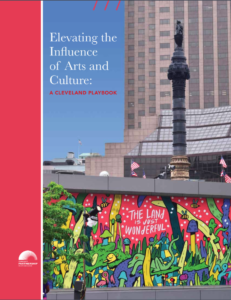 A history, of the tactics that contributed to successes in the Cleveland, Ohio, area to realize the fuller potential of arts and culture. You’ll also see call-out material with more concrete, universal lessons to help you apply those tactics in a variety of settings. 2018.
A history, of the tactics that contributed to successes in the Cleveland, Ohio, area to realize the fuller potential of arts and culture. You’ll also see call-out material with more concrete, universal lessons to help you apply those tactics in a variety of settings. 2018.
As a result of CPAC’s work:
- Tax money has been directed for arts and culture
- Facilities have been built or renovated
- Governments have become involved
- Creative businesses have merged or collaborated
- Innovative cross sector partnerships have emerged
Through CPAC’s process outlined in the playbook, organizations and communities anywhere can see what worked in Northeast Ohio and what did not. Any one of the strategies in this playbook could be beneficial, depending on a community’s vision and current situation. It is our hope that our story can provide other organizations with insight into how they might strengthen their own arts and culture sectors and thus their whole communities.
Spiral-bound print copies available by request.
Culture Pulse 2017
Culture Pulse
Examines financial trends, such as income and expenses, as well as participation, human resource and space trends. It also compares Cuyahoga County trends with national trends and is informed by a set of three focus groups. Dive deeper into the trends and health of arts and culture as a local asset by viewing both the visually dynamic report, and the full set of data tables. 2017.

Cuyahoga County’s nonprofit arts and cultural sector thrives along many dimensions. Throughout our discussions with local arts and cultural nonprofit leaders, we heard a common thread: Cuyahoga County’s arts ecosystem benefits from arts and cultural organizations’ being open to collaborating, the high number of free arts and cultural offerings, and generous public funding. Community members attend small festivals, tour large museums, and take art classes. Artists ranging from local painters to writers to dancers to designers live, work, and share their craft in Northeast Ohio. Creativity is in the water.
Culture Pulse 2015
Cuyahoga County residents have access to world-class arts and culture organizations and individual artists. Through classic and contemporary works, arts and culture is celebrating our heritage and imagining our future. Such great cultural production cannot happen without strong and well-resourced arts and culture organizations and individual artists.
The health of the arts and culture sector was the focus of Arts Cleveland’s annual snapshot of arts and culture nonprofits, Culture Pulse.
support
 The data revealed contributed support has risen slightly, while larger gains were made in earned income for the sector. However, such revenue growth was offset sharply by declines in investment income. In light of growing endowments, being mindful of the impact of market fluctuations is one area to monitor moving forward. Foundation and government support remain critical components of the sector’s revenue.
The data revealed contributed support has risen slightly, while larger gains were made in earned income for the sector. However, such revenue growth was offset sharply by declines in investment income. In light of growing endowments, being mindful of the impact of market fluctuations is one area to monitor moving forward. Foundation and government support remain critical components of the sector’s revenue.
employment
The sector’s workforce has experienced gains in terms of full-time and part-time employment. Salaries and fringe benefits have also increased. The sector is engaging more independent contractors as well, particularly artists and performers. Despite overall workforce growth, an area to monitor is an overall decline in the number of board members for the sector.
space
While more organizations report owning space, the overall square footage filled by arts and culture organizations has declined. This decline is largely driven by reductions in donated space.
Why arts and culture?
Arts and culture provokes contemplation on issues facing our community. It enhances critical thinking skills, encourages innovative thought and challenges us to see different perspectives.
As a partner in Cleveland’s resurgence, arts and culture’s impacts are far-reaching.
- Creative placemaking efforts are revitalizing neighborhoods and improving the quality of experiences for residents and tourists.
- Arts and culture practices are improving the health outcomes of patients and changing the design of healthcare facilities.
- Arts and culture is contributing to our economy through its businesses, employment and tax payments.
We could go on, but we’ll let you dive into the data to see for yourself.
About
The data used for this report was provided by the Cultural Data Project (CDP), an organization created to strengthen arts and culture by documenting and disseminating information on the arts and culture sector. Any interpretation of the data is the view of Arts Cleveland/CPAC and does not reflect the views of the Cultural Data Project.
Culture Pulse 2014
Culture Pulse 2014
In Culture Pulse 2014, Arts Cleveland/Community Partnership for Arts and Culture leveraged 2010-2012 data from the Cultural Data Project on a sample of 96 arts and culture nonprofits in Cuyahoga County. 2014.
Just as our pulse rates can be monitored as basic measures of health throughout our lifetimes, regular measurement of financial, human and infrastructure resources helps track our arts and culture sector’s health and momentum.
This report illuminates the ways arts and culture organizations are responding to, and evolving in light of, changing environmental factors. Understanding such trends is an important step in strengthening and sustaining this vital asset for generations to come.
Culture Pulse 2013
Culture Pulse is an in-depth analysis of the financial, human capital and infrastructure health of 93 arts and culture nonprofits in Cuyahoga County. Culture Pulse leverages information from the Ohio Cultural Data Project (OCDP) to examine trends over 2009-11 and to discuss the future implications for arts and culture organizations in Cuyahoga County. 2013.
The rhythmic beat of a drum builds tempo and helps drive a song’s momentum forward. A beat is counted and occurs with regularity throughout a song just as a person’s pulse rate can be monitored as a basic measure of health. Like the beat in a song or the rate of a pulse, regular measurement of indicators helps to track our arts and culture sector’s health and momentum.
In Culture Pulse, Arts Cleveland (formerly Community Partnership for Arts and Culture) leveraged 2009-2011 data from the Ohio Cultural Data Project on a sample of 93 arts and culture nonprofits in Cuyahoga County. Through this analysis, Arts Cleveland has gained a deeper understanding of their financial, human capital and infrastructure health. Cuyahoga County’s arts and culture sector is an extraordinary asset, and careful examination will help to sustain its strength.
Cuyahoga County Arts and Culture and Economic Recession. 2009
Arts, Culture, and the Recession
Analysis exploring the arts and culture sector in light of the “Great Recession.” 2009.
Some have suggested that the arts and culture sector, as it is currently constructed, has not kept pace with demographic, social and technological changes in the environment. This report presents the findings from two approaches that explore arts and culture in light of the “Great Recession.” This report makes recommendations for the sector’s sustainability and future recovery. It complements one of Arts Cleveland’s Arts and Culture Roundtable events.
Strengthening Arts and Culture
A survey to assess gaps in services available to the arts and culture sector. 2008. This document summarizes the results of a survey that looked at the levels of familiarity, use, and favorability of arts and culture sector-building activities. The goals of the survey were to assess awareness and use of on-going supportive programs for the arts and culture sector and to identify gaps in services which are believed to be important for the sector’s stability and vitality.
Northeast Ohios Arts and Culture Plan - A Report on Progress
This report highlights the advancements Northeast Ohio had made regarding each of the four goals outlined in Northeast Ohio’s
Arts & Culture Plan: Access (to effectively connect the region’s people to arts and culture); Learning (to establish lifelong arts and cultural education); Partnership (to make arts and culture a partner in neighborhood, community and regional development); and Resources (to develop financial and other resources to sustain and grow the arts and cultural sector).


